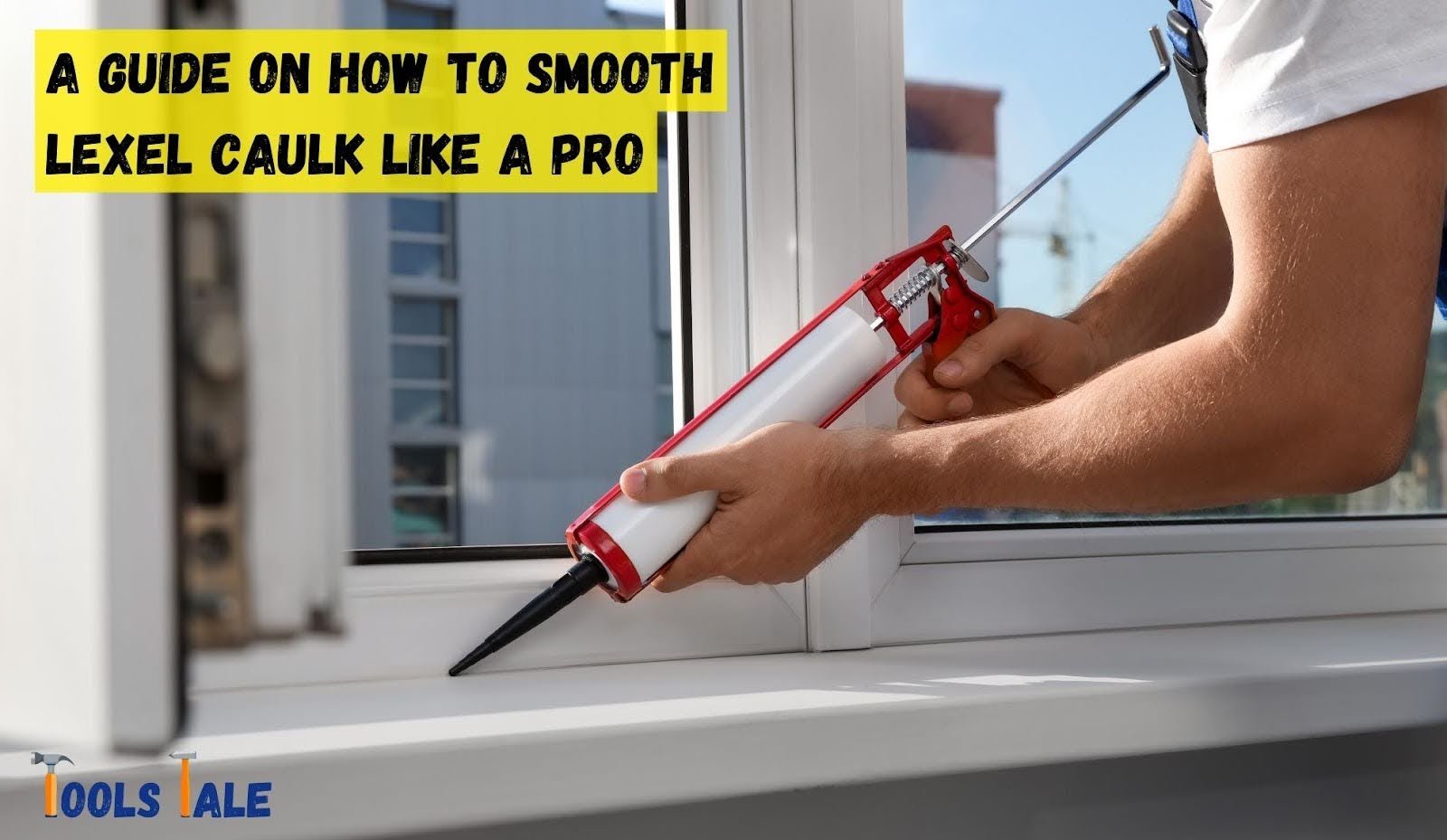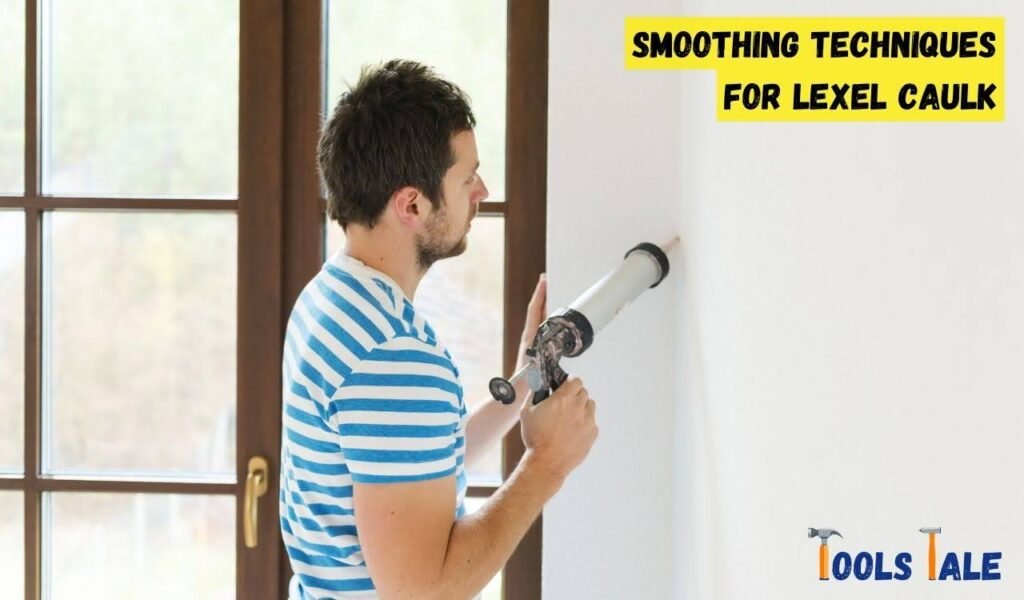Physical Address
304 North Cardinal St.
Dorchester Center, MA 02124
Physical Address
304 North Cardinal St.
Dorchester Center, MA 02124

Want to master the art of DIY caulking? Look no further. In this guide, we’ll show you how to smooth Lexel caulk like a pro. Say goodbye to uneven finishes and hello to seamless results. Whether you’re a seasoned DIY enthusiast or just starting, our quick and easy tips will have you caulking like a pro in no time. Get ready to transform your projects with a smooth, professional touch!
Key Summary: How to Smooth Lexel Caulk?
To achieve a professional finish with Lexel caulk, start with a clean surface. Apply the caulk evenly with a caulk gun. Smooth it using a wet finger or a plastic spatula, feathering the edges for a seamless look. Wipe away excess caulk with a damp cloth and allow it to cure for 24 hours for the best results.
You’ve decided to tackle a home improvement project, and Lexel caulk is your trusted companion in sealing gaps and joints. But the true art of using Lexel lies not just in applying it but in ensuring a smooth, professional finish. In this guide, we’ll take you through the steps of perfecting your Lexel caulk application. From understanding Lexel’s unique properties to mastering the art of smoothing, we’ve got you covered.
Before you embark on your caulking journey, let’s dive into what makes Lexel caulk stand out. Lexel is renowned for its exceptional properties. It’s a clear, elastic sealant that maintains flexibility over time, making it an excellent choice for both indoor and outdoor projects.
Lexel’s resistance to water makes it ideal for sealing bathroom and kitchen fixtures, as well as outdoor applications. Another standout feature is its paintability. You can seamlessly integrate it into your interior or exterior color schemes. Plus, Lexel’s enduring flexibility ensures a long-lasting seal, even as surfaces expand and contract.

To achieve a polished Lexel caulk finish, you’ll need the right materials and tools at your disposal. Here’s a list to ensure you’re well-prepared:
With these materials and tools, you’ll be well-prepared to perfect your Lexel caulk finish.
The foundation of a seamless caulk finish begins with proper surface preparation. Follow these steps to ensure a clean and effective seal:
Properly preparing the surface sets the stage for a successful Lexel caulk application. Now, let’s explore the process of applying Lexel caulk and achieving that smooth, professional finish.
With your surface prepared and your materials ready, it’s time to apply Lexel caulk. Here’s a step-by-step guide to ensure a smooth application:

Smoothing Lexel caulk is an essential step in achieving a professional and polished appearance for your home improvement projects. Here, we’ll delve into various techniques that will help you master the art of creating a smooth finish with Lexel caulk:
A caulk smoother tool is a specialized tool designed for the precise application and smoothing of caulk. It’s an excellent choice for achieving a consistent and professional finish. Here’s how to use it:
Another effective method for smoothing Lexel caulk involves using a damp cloth or sponge. This technique is particularly useful for curved or irregular surfaces. Here’s how to do it:
Believe it or not, your finger can be a valuable tool for smoothing Lexel caulk. The warmth of your finger aids in ensuring good adhesion. Here’s how to use your finger effectively:
While the above techniques provide various options for smoothing Lexel caulk, the key to mastering this skill is practice. Experiment with different tools and methods to find the one that works best for your specific project.
Even with the best preparation, issues can arise. Here are some common problems and how to troubleshoot them:

Understanding the drying and curing process of Lexel caulk is essential for ensuring the longevity and effectiveness of your caulking project. Drying and curing are distinct phases, and it’s crucial to differentiate between the two. Drying typically occurs within the first 20-30 minutes after application, creating a touch-dry surface. During this time, it’s important to provide adequate ventilation to expedite the drying process.
However, it’s essential to avoid putting any significant pressure on the caulk or exposing it to water during this period. On the other hand, curing is a more extended process, spanning from 7 to 14 days. This is when the caulk achieves its maximum strength and durability, forming a complete bond.
Disturbing the caulk during the curing phase should be avoided to ensure an even finish and uncompromised adhesion. Always follow the manufacturer’s recommendations for the specific Lexel product you’re using to achieve the best results in your caulking project.
A well-done caulk job can last for many years, but to ensure the longevity of your work, consider the following maintenance tips:
By following these maintenance practices, you can prolong the life of your caulked surfaces and ensure that your Lexel caulk continues to perform effectively for years to come.
In conclusion, mastering the art of how to smooth Lexel caulk can truly elevate your DIY projects. With the right techniques and tools, achieving a professional finish is well within reach. Say goodbye to uneven caulk lines and welcome the satisfaction of seamless results.
Whether you’re a seasoned DIY enthusiast or just starting, these tips have empowered you to become a pro caulker. So, go ahead, take on those home improvement projects with confidence and enjoy the seamless, flawless results you deserve.
Lexel caulk can be smoothed to achieve a seamless finish. Using a caulk-smoothing tool or a wet finger, gently press and shape the caulk within a few minutes of application.
The curing time for Lexel caulk varies with temperature and humidity. Generally, it takes 7 to 14 days for Lexel to fully cure and achieve its maximum strength.
Lexel caulk becomes water-resistant once it’s dry to the touch, which typically occurs within 20-30 minutes after application. However, full waterproofing may take a few days.
To achieve a smooth finish, apply Lexel caulk in a steady bead, then use a caulk-smoothing tool or a wet finger to create an even surface. Avoid interruptions during the application process.
Lexel caulk is a versatile sealant used for a wide range of applications, from sealing gaps and cracks in windows and doors to filling joints in bathrooms and kitchens. It offers excellent adhesion and flexibility.